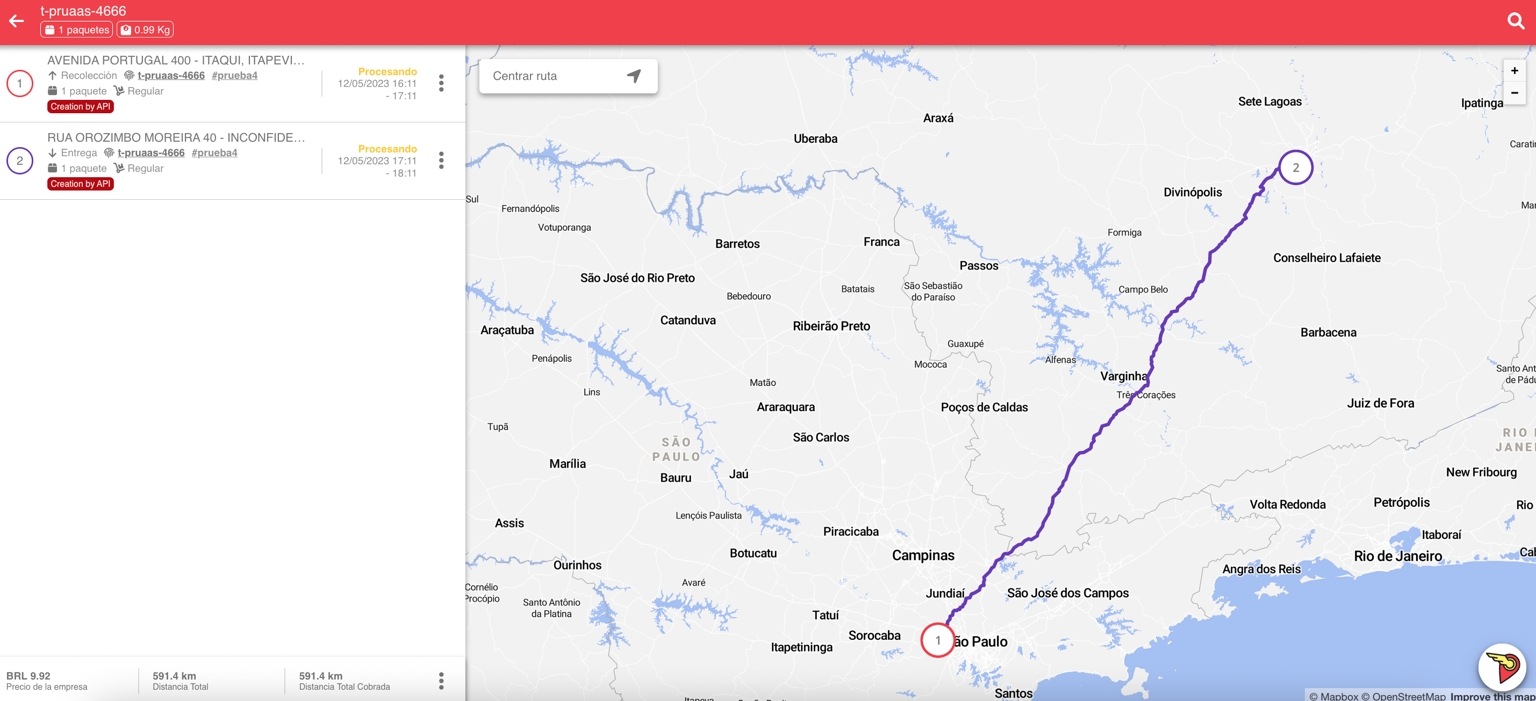Deliveries
This is the central unit within Shippify. It consists of a set of two points, one for pickup and the other for delivery, where the associated packages must be transported.

Components
A task has three essential components:
Pickup Data: It consists of two parts, contact information and a location. This information is visible to the driver when picking up the packages.
Delivery Data: It consists of two parts, contact information and location. This information is visible to the driver at the time of package delivery.
Packages: Contains information about the item(s) to be transported in a task.
In addition to these, you can add more relevant information:
Digital Labels: Here you can add as many as you want, they are words that describe your delivery, for example "fragile".
Reference Identifier: It is the identifier of your order in the external system you use.
Extra Data: Here you can store additional information you need, such as invoice number, transport guide number, customer code, etc.
COD: Cash on Delivery value.
Types of deliveries and scheduling hours
There are 3 types of deliveries that you can create, depending on which you will have different prices and pickup and delivery schedules.
Flex
This type of rate divides the day into two parts by a deadline hour:
When a delivery is created before the deadline hour.
When a delivery is created after the deadline hour.
For both cases, different configurations can be made regarding the day and time when the delivery will be scheduled, the most popular ones are:
Flex same day
When a delivery is created before the deadline hour, it is scheduled for the same day.
When a delivery is created after the deadline hour, it is scheduled for the next business day.
Flex next day
When a delivery is created before the deadline hour, it is scheduled for the next business day.
When a delivery is created after the deadline hour, it is scheduled for two business days later.
Express
This type of rate sets the earliest possible collection time, and only that time can be chosen.
Regular
This type of rate provides the user with several time windows from which they can choose one to create their delivery. Alternatively, the user can select a specific date/time for delivery.
Endpoints
Última actualización